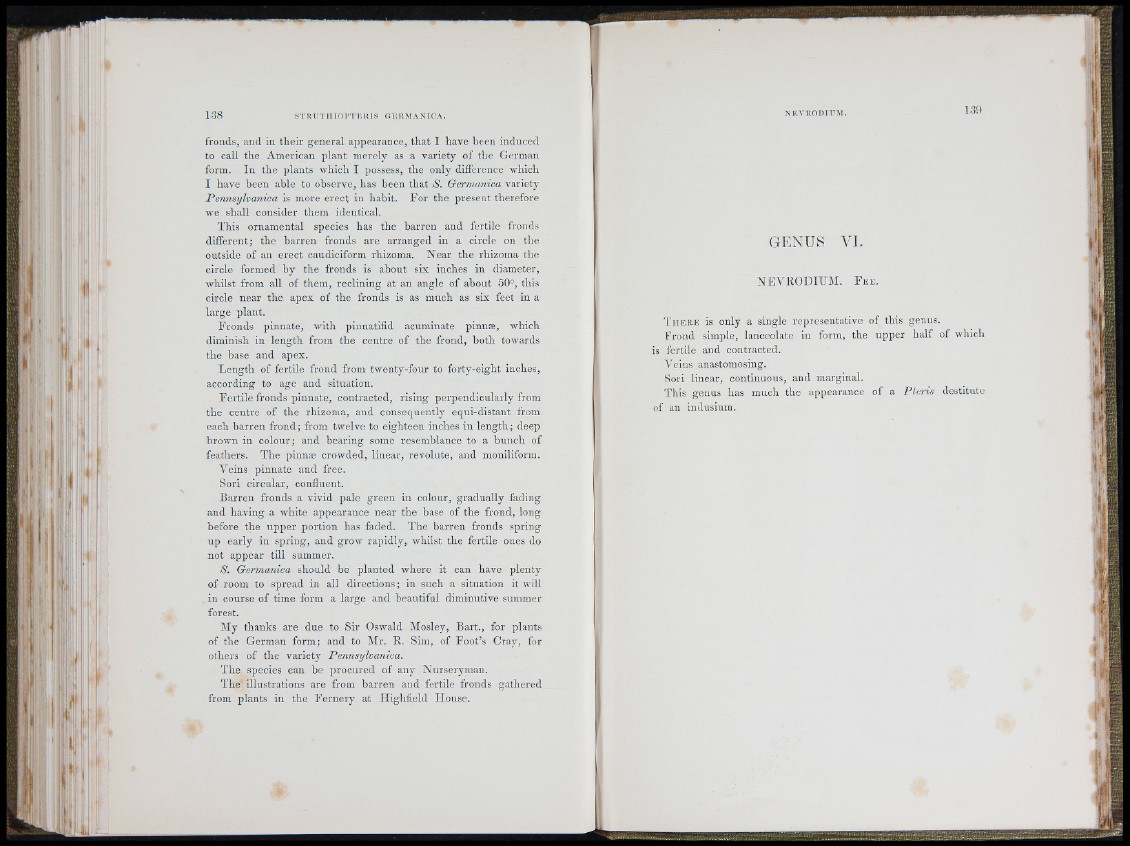
fi
j
(■
•s : '
'iiîîÜ f t :
■riiiiii i' !!
froncis, and in th e ir general appearance, th a t I have been induced
to call th e American p lan t merely as a variety of the German
form. I n the plants which I possess, the only difference which
I have been able to observe, has been th a t S. Oermanica variety
P enm y lva n ica is more e rect in habit. F o r th e p resent therefore
we shall consider them identical.
This ornamental species has the b a rren and fertile fronds
different; the b a rre n fronds are arranged in a circle on the
outside of an e rect caudiciform rhizoma. N e a r th e rhizoma the
circle formed by the fronds is about six inches in diameter,
whilst from all of them, reclining at an angle of about 50°, this
circle n ear the apex of the fronds is as much as six feet in a
large plant.
F ro n d s p innate, with pinnatifid acuniinate pinnæ, which
diminish in len g th from, the centre of th e fro n d , both towards
th e base and apex.
L en g th of fertile frond from twenty-four to forty-eight inches,
according to age and situation.
F e rtile fronds p in n a te , contracted, rising perpend icu la rly from
th e centre of the rhizoma, and consequently equi-distaiit from
each b a rre n fro n d ; from twelve to eighteen inches in len g th ; deep
brown in colour; and b earing some resemblance to a b u n ch of
feathers. T h e pinnæ crowded, linear, revolute, and moniliforni.
Veins pinnate and free.
Sori circular, confluent.
B a rren fronds a vivid pale g reen in colour, grad u a lly fading
and hav in g a white appearance near the base of the frond, long
before th e u p p e r p ortion has faded. The barren fronds spring
u p early in spring, and grow rap id ly , whilst th e fertile ones do
n o t ap p e a r till summer.
S. Germanica should he p lan ted where it can have p lenty
of room to spread in all directions; in such a situation it will
in course of time form a large and beautiful diminutive summer
forest.
My thanks are due to Sir Oswald Alosley, B a rt., for plants
of the German form; and to Mr. R. Sim, of F o o t’s Cray, for
others of the v ariety Pennsylvanica.
T h e species can be pro cu red of any Nurseryman.
The illustrations are from b a rre n and fertile fronds gath e red
from plants in the F e rn e ry at Hightiekl House.
GEN U S V I .
N E V R O D IU A I. F e e .
T h e r e is only a single repre sentative of this genus.
F ro n d simple, lanceolate in form, the u p p e r hall of which
is fertile and contracted.
Veins anastomosing.
Sori linear, continuous, and marginal.
T his genus has much the appearance of a P le ris destitute
of an indusium.
i I
I
I !<:)
I
ft
Ii